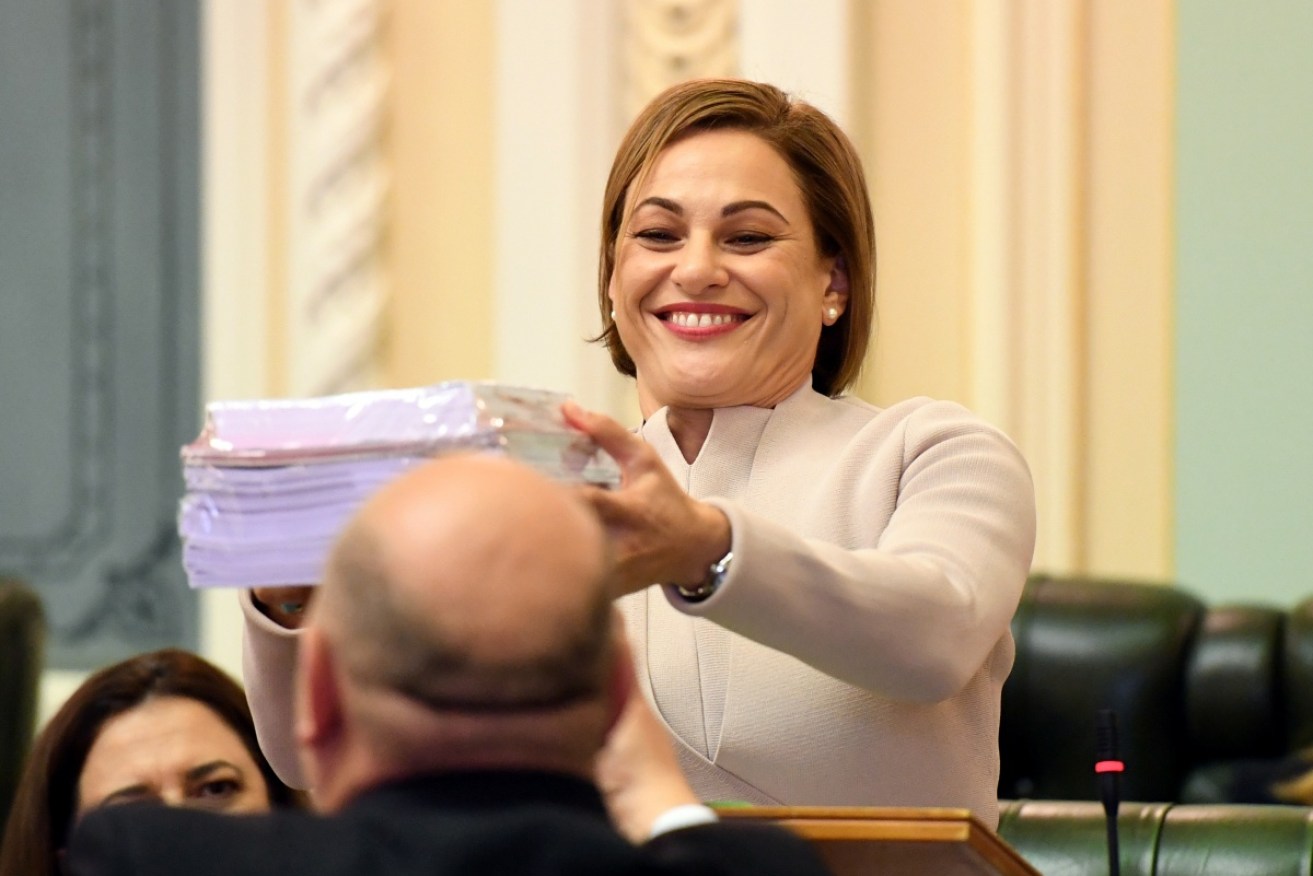State governments facing more cuts as GST collections shrink


Queensland Treasurer Jackie Trad expanded three taxes to raise $1.47 billion in lost GST. Photo: AAP
While state governments perform their ritual dance about the unfair carve-up of GST, the GST pie itself is shrinking faster than anyone wants to admit.
The states have only factored into their budgets the weaker GST growth forecast by the federal government in April – but that now looks wildly optimistic.
And what’s worse is that the states are in for a shock when the final instalments for this financial year’s GST arrive – they could be half of what was forecast.
Before Tuesday’s budget, NSW Treasury warned the federal budget’s downgrading of GST growth would mean a cut of $2.3 billion for the state over the next four years compared with what had been expected.
Josh Frydenberg’s budget alleged GST collections would be up by 4 per cent this financial year, but grow by only 2.4 per cent in 2019-20.
Trouble is, consumption has fallen much more sharply than Mr Frydenberg’s Treasury dared to guess.
The April 2 budget forecast consumption (which normally makes up nearly 60 per cent of the economy) would grow in 2019-20 by 2.75 per cent.
The Reserve Bank in February was forecasting consumption growth of 2.5 per cent, but slashed that to 2 per cent in its May 10 Statement on Monetary Policy.
And the Australian Bureau of Statistics’ national accounts on June 5 found consumption had grown by only 1.8 per cent in the year to the end of March.
Given that the March year included a strong 2018 June quarter that will drop out of the figures for the financial year, 2018-19’s final score will be something worse again.
Say goodbye to the idea the GST collections rose by 4 per cent this year.
With present policy, there’s little reason to believe consumption growth is about to strengthen come July 1.
While Treasury looks like being wrong with its numbers, it nonetheless forecast a fall despite the promised tax cuts.
Even if the March year’s 1.8 per cent consumption growth holds for 2019-20, it would mean a one-third reduction from the budget forecast.
GST revenue is not directly correlated with consumption due to exempt items and changing spending patterns, but it’s not too far adrift.
Thus, on top of slumping real estate stamp duty collections, the states look like having to deal with yet-lower GST revenue, putting pressure on service delivery.
The present level is already hurting. NSW Treasurer Dominic Perrottet is reportedly concerned his state will be disadvantaged in the GST carve-up despite a “no-worse-off” clause in the agreement.
The Queensland budget last week showed its GST revenue had been chopped from $15.13 billion in 2018-18 to an estimated $14.44 billion this financial year and $14.2 billion next year.
And that’s based on the federal government’s optimistic April election budget figures.
Treasurer Jackie Trad blamed the GST reduction for having to expand three taxes to raise another $1.47 billion over four years.
She promised to repeal corporate land tax and land-absentee surcharge increases if the federal government gave back Queensland’s “fair share” of GST.
With the likely shortfall in collections, it may not be the carve-up that hurts most.








